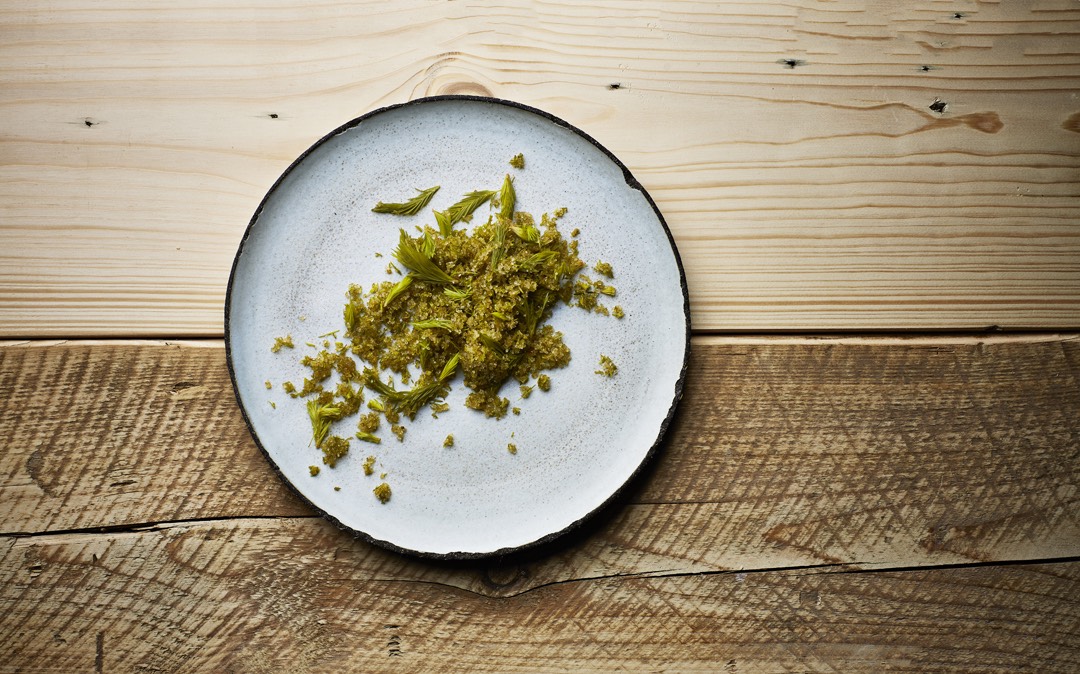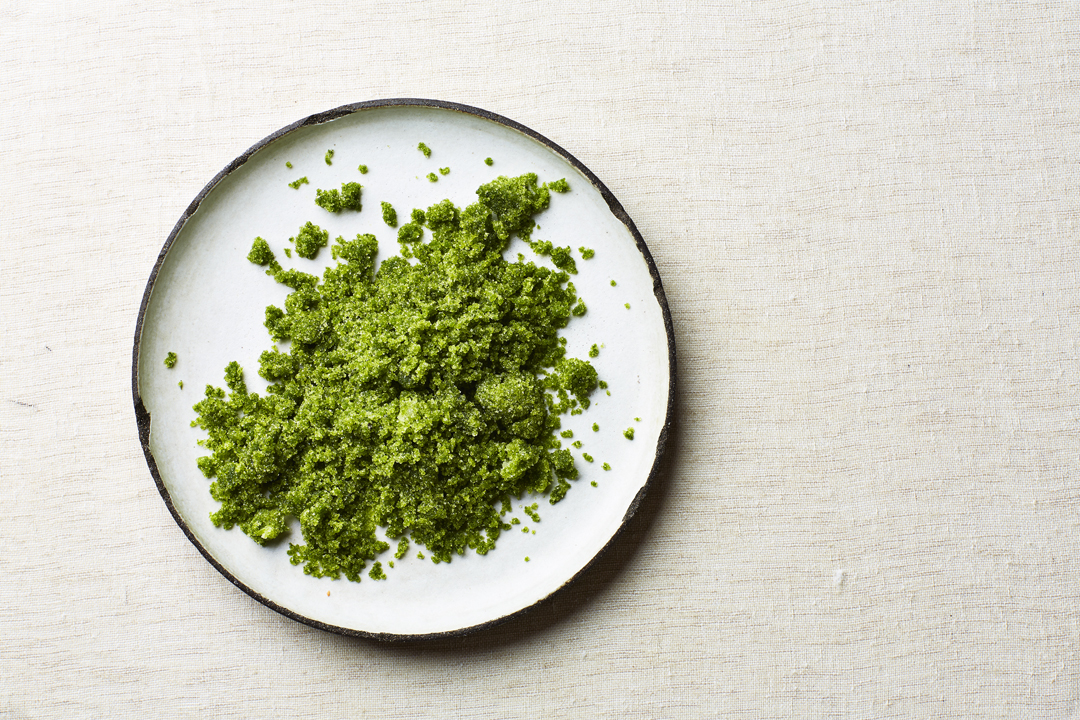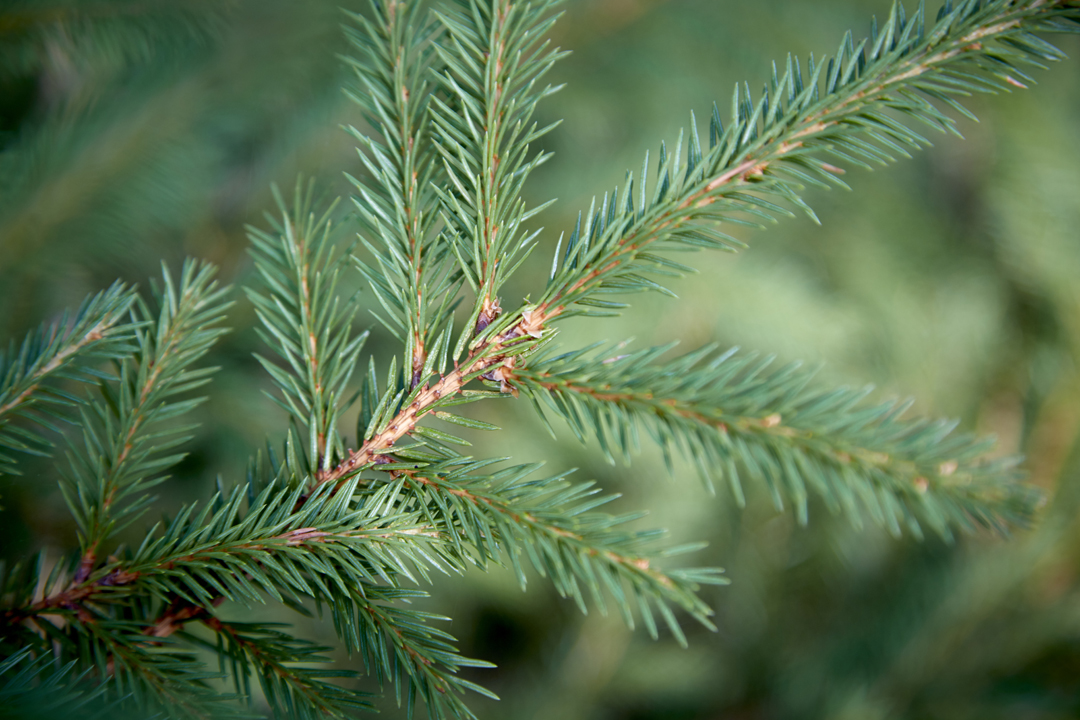
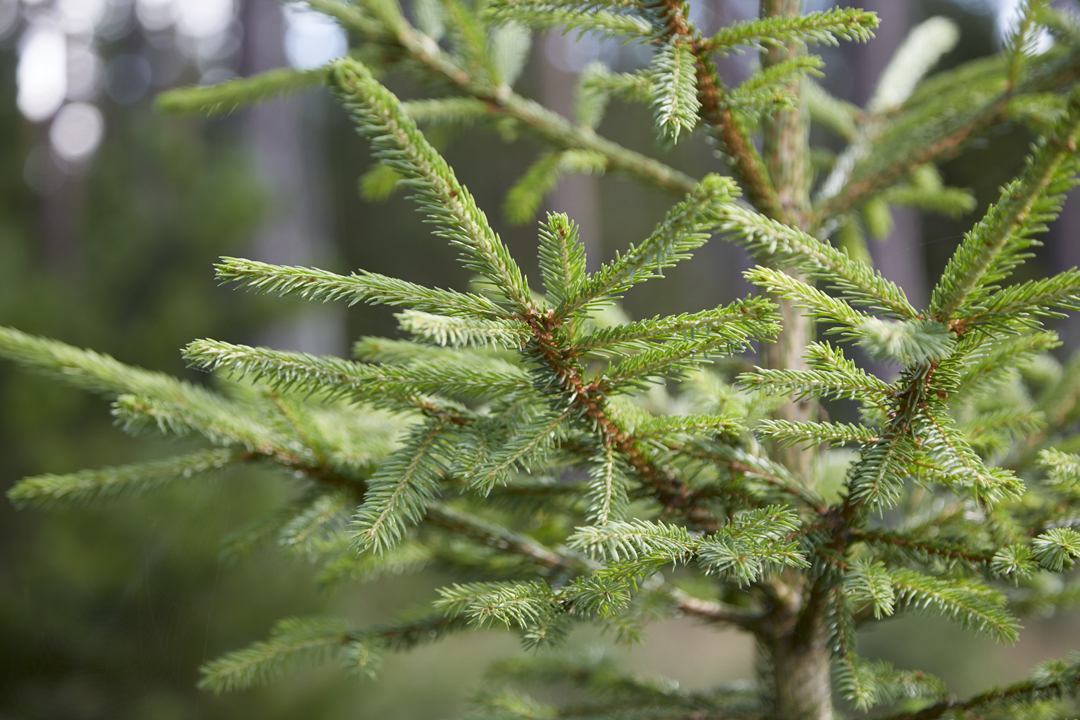
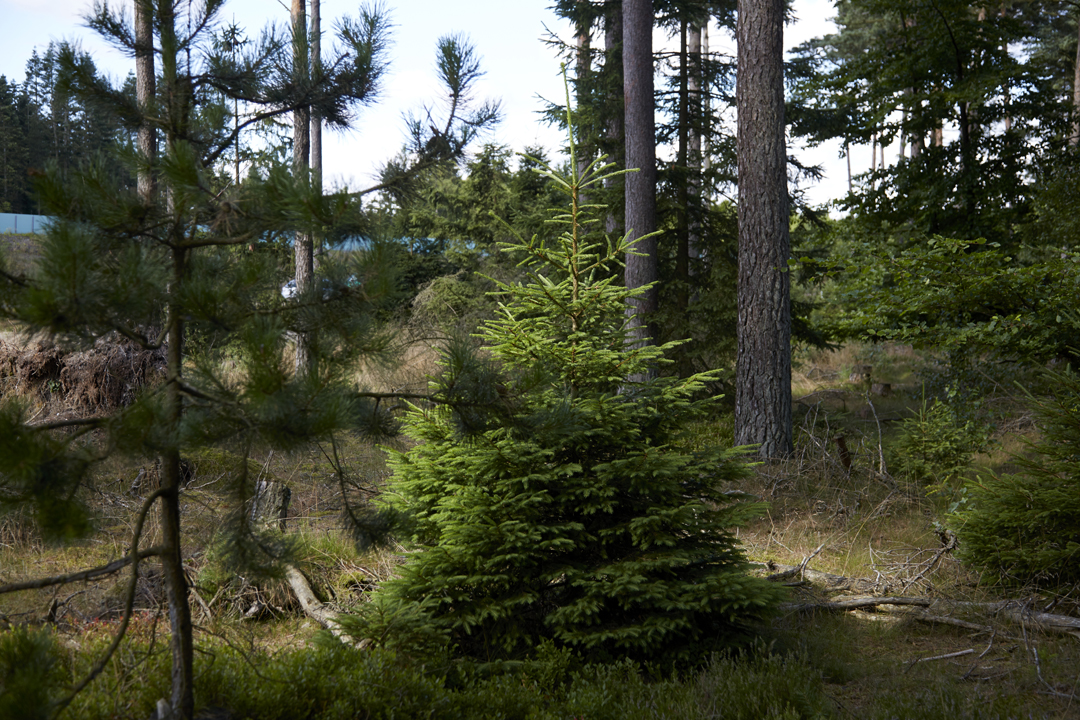
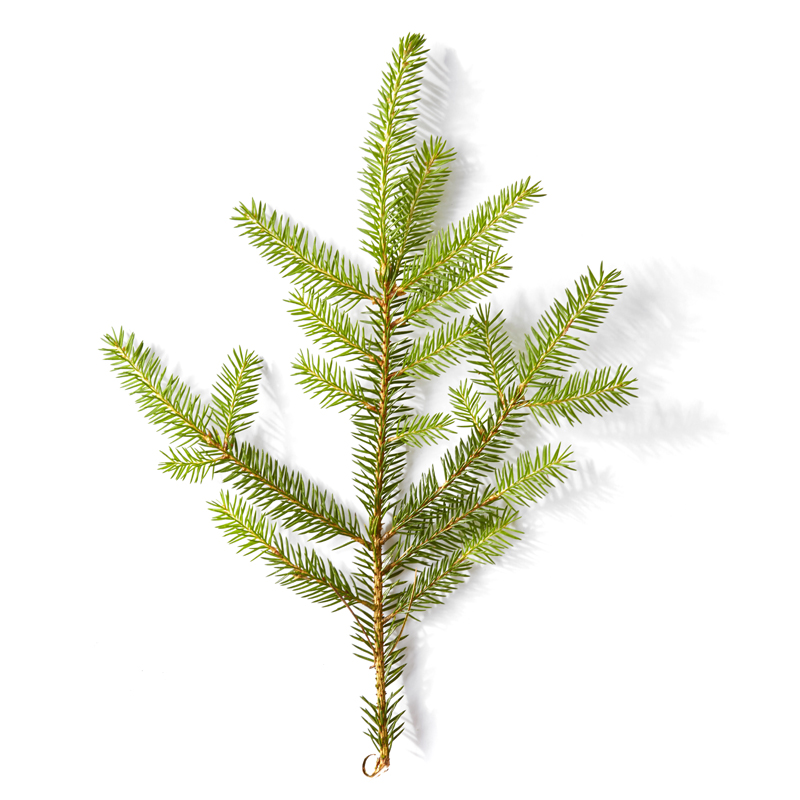
Norway Spruce
As the carol goes: "first we show the tree, then it's time to eat"—but it's not just candy cones full of nuts and cakes that can be eaten off of the traditional Danish Christmas tree. The tree itself has something to offer.
-
Where to Find It
Norway spruce is the most common forest tree in Denmark—it actually covers about a third of our forested areas in dark, dense forests where the light rarely hits a floor covered in brown needles, dead branches, and not much else. Once a Norway spruce forest reaches a certain age and the branch cover becomes less impenetrable, small mosses, herbs and even an elder or two can find their way to the forest floor.
Coniferous forests, towns. -
When to Find It
You can harvest new shoots from the Norway spruce in May and June. Shoots: May, June.
Shoots: May, June
-
How to Spot It
A Norway spruce can grow to be 30-40 meters tall and has reddish-brown bark that turns greyish and becomes flaky with age. The cones grow to 10-16 cm long and hang beneath the branches, which grow in rings around the trunk. The needles are stiff and prickly.
-
How to Pick It
Find a Norway spruce that isn't growing on a Christmas tree farm and snip the small green shoots from the branches—as long as you have permission.
Risk of misidentifying the plant
Norway spruce may look like Scotch pine, which isn't toxic, but it can also be confused with yew trees, which are. Like Norway spruce’s, Scotch pine branches grow in rings around the trunk, but on the spruce small twigs grow between the large branches, something that Scotch pines lack. Spruce also has a distinctive smell, which yew trees don’t.


